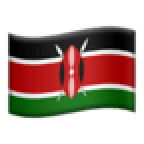The Kisii (Abagusii) community of Kenya holds marriage as one of the most sacred rites of passage, deeply rooted in customs passed down through generations.
A traditional Gusii wedding is not a single-day event, but a multi-stage process steeped in meaning, from the payment of bride wealth (ogotimia) to the colourful ekeremo (wedding ceremony), culminating in a union blessed by both family and ancestral spirits.
As modern influences such as Christianity, Islam, and civil registration become more widespread, the community has embraced a blend of traditional and contemporary practices.
Here’s a detailed look at the essential stages of a Kisii traditional marriage ceremony and how they’ve evolved over time.
1. Bride price payment (Ogotimia)
The process begins with ogotimia, the payment of bride wealth by the groom's family to the bride’s family. This is not simply a transaction—it symbolises the beginning of a socially recognised and culturally sanctioned marriage.
The payment usually includes livestock, money, or a combination of both, and is meant to express gratitude for the bride’s upbringing and signify a binding relationship between the two families.
)
READ: 3 steps of a Kalenjin traditional marriage, rituals & modern changes
Traditionally, negotiations over the bride wealth could last days, facilitated by respected elders who mediate to ensure fairness and unity.
Once agreed upon, the bride wealth may be paid in instalments, but the first token is essential to formalise the engagement.
2. First visit to the bride’s family (Ekeri-boko)
Before the wedding, the groom and his delegation make a formal visit to the bride’s family—a stage known as ekeri-boko.
During this visit, the groom is introduced to the bride’s kin, and the couple may be meeting for the first time if a traditional matchmaker initiated the process.
It is a critical moment for both families. The bride’s female relatives observe the groom, assessing his character, confidence, and background.
This meeting helps solidify social ties and provides an opportunity for dialogue between the two lineages.
)
3. Wedding ceremony (Ekeremo)
Ekeremo is the pinnacle of the traditional wedding process, a colourful and joyous celebration held at either the bride’s or groom’s homestead.
The event features music, dance, food, and blessings from elders. On this day, the bride transitions officially into her new role as a wife.
One key ritual during ekeremo is the bride being carried by her uncles from her home to the groom’s homestead.
This act symbolises her purity and respect, as she is not allowed to walk on the ground. Upon arrival at the groom’s compound, lessos or khangas are spread on the ground for her to step on—a sign of honour and protection.
The celebration is accompanied by traditional songs and ululations from both families, signalling joy and acceptance.
In Christian or Islamic families, the ekeremo may follow or precede a religious ceremony held in a church or mosque, with both events honouring different aspects of the union.
)
4. The giving of a bridal name
Following the wedding, the bride is given a new name by her in-laws—a title that often reflects her new status, role, or a trait the family wishes to associate with her.
This name can be derived from the husband's lineage or inspired by past matriarchs within the family.
The act of naming is not merely ceremonial. It represents identity transformation and social integration into the groom’s family. Some brides wear beaded jewellery or carry symbolic artefacts when receiving the name.
5. Installation of anklets (Ogotimia egetinge)
This ritual is private and often accompanied by songs, laughter, and advice from the elder women, who use the occasion to mentor the bride. This custom is however, no longer practised
6. Songs and communal celebrations
Throughout the process, music and celebration are integral. Upon her arrival, the bride is welcomed with songs of joy and blessings from the elders.
)
READ ALSO: 7 stages of a Kamba traditional wedding
Traditional instruments like obokano (a stringed instrument) are played, and women lead esagasaga dances that speak of love, unity, and womanhood.
These cultural performances bring life to the event and reflect the community’s values around marriage.
Modern and Religious Integration
In today’s society, many Kisii couples incorporate Christian or Islamic practices into their weddings without discarding tradition.
A church wedding might follow the payment of bride wealth and the ekeremo, with the couple undergoing religious counselling or blessing ceremonies. Civil registration also ensures the union is recognised legally by the state.
)
READ ALSO: Senator Hezena halts wedding & returns dowry - Samburu culture behind drastic move
Bridal showers, matching outfits, photography, and reception parties are now common, but many families still hold on to the core customs such as ogotimia, ekeri-boko, and the giving of a bridal name.


)
)